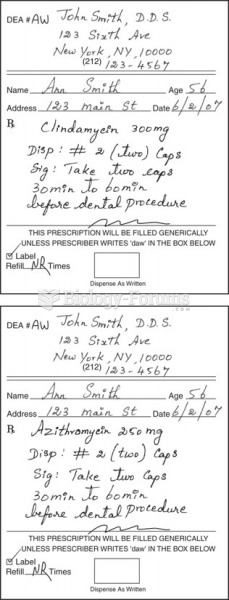|
|
|
Did you know?
More than 34,000 trademarked medication names and more than 10,000 generic medication names are in use in the United States.
Did you know?
There are more nerve cells in one human brain than there are stars in the Milky Way.
Did you know?
There are over 65,000 known species of protozoa. About 10,000 species are parasitic.
Did you know?
Everyone has one nostril that is larger than the other.
Did you know?
The Romans did not use numerals to indicate fractions but instead used words to indicate parts of a whole.







